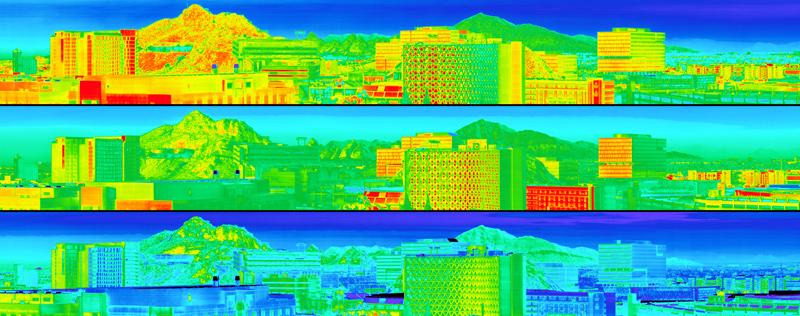Mission Updates | May 26, 2022
Europa Clipper's Thermal Imager Delivered to JPL
After months of testing, an Arizona State University-designed and -built instrument to measure the surface temperature of Jupiter’s moon Europa has arrived at NASA’s Jet Propulsion Laboratory in Southern California. There it will join eight other instruments and become an integral part of the agency’s Europa Clipper spacecraft.
The instrument is the Europa Thermal Emission Imaging System (E-THEMIS) led by Philip Christensen of Arizona State University’s School of Earth and Space Exploration.
E-THEMIS is an infrared camera designed to map temperatures across Europa’s surface. Its images, taken in three heat-sensitive bands, will help scientists find clues about Europa’s geological activity, including regions where the moon's presumed ocean may lie near the surface. While Europa is slightly smaller than Earth's Moon, scientists think its ocean may hold twice the volume of Earth's oceans.

Besides identifying any warmer areas on Europa's surface, E-THEMIS images will also help scientists determine the physical state of the icy surface. As parts of Europa's landscape cool after local sunset, areas of solid ice will stay warmer longer, while those with a granular texture will lose heat more rapidly. By mapping the rates of cooling across the surface, scientists will better understand Europa’s small-scale properties. This technique might even help to identify interesting sites for a possible future lander.
Europa Clipper is a spacecraft sent to investigate Jupiter's ice-shrouded moon Europa. It is planned to launch on a SpaceX Falcon Heavy rocket in October 2024 and arrive at Jupiter in April 2030 after making flybys of Mars in 2025 and Earth in 2026. These planetary flybys use the masses of Mars and Earth to boost the spacecraft's velocity so it can reach the Jupiter system.
After entering orbit at Jupiter, the spacecraft will make about 50 flybys of Europa to investigate whether the moon could harbor conditions suitable for life.
Read more about the delivery here.




